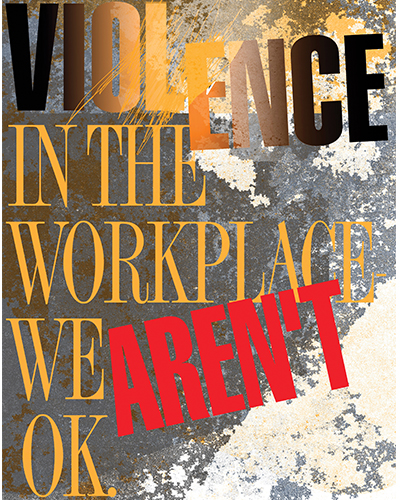ASK ALAN: How To STOP Workplace Violence?

Workplace violence is rising at an alarming rate. Although many leaders and staff are concerned, most don’t know how or where to begin to solve this horrific problem. The following is my interview with a renowned expert. I hope this resonates and causes you to become proactive toward solving this serious issue!
 |
We are all too familiar with the violence in Columbine, at the Annapolis Capital Gazette, the Washington Navy Yard, the Kroger-owned supermarket in Boulder CO, massage parlors in Atlanta, Orange County, CA, and many many others. They have resulted in people killed, terrified employees, and suffering families. With workplace violence on the rise, it should be no surprise that 1 out of 7 Americans does not feel safe at work, according to the Society for Human Resource Management, (SHRM) known as – the voice of all things “work.”
If you are a business owner, CEO, manager, or human resource professional, it is highly likely that you are concerned but ill-prepared to deal with preventing workplace violence. How could you not be with so many employees voicing their fears.” This is according to Felix Nater, a nationally recognized Workplace Violence Prevention Advisor. Felix has thirty years of experience, many awards, and recognitions including, from the prestigious International Association of Professional Security Consultants, (IAPSC). I felt that Felix would be an ideal expert, for advice on this topic. Recently, he agreed to meet with me to discuss the subject for this ASK ALAN (business advice and idea) column.
Please help put workplace violence in perspective. |
|
“The problem is much greater than you would think. Nearly half of HR professionals said their organization had at some point experienced a workplace violence incident—up from 36 percent in 2012. And of those who reported having ever experienced workplace violence, over half said their organization had experienced an incident in the last year.“ |
Many business owners deny that workplace violence is an important issue for their “small” businesses. Is workplace violence limited to the size of the business? |
|
“This is a common misunderstanding, the answer is no. No business is immune. Small brick-and-mortar businesses with just a few employees are as vulnerable as hospitals, educational institutions, and large corporations. Another mistake is underestimating the multiple layers and dimensions of the issue. Most often, company management only focuses on prevention. To be truly effective, businesses must consider this issue in terms of security, prevention, training, and response.” |
The negative media coverage seems to only spotlight active shooters. What harm does this limited focus present?
 |
Many business owners tell me that they have trained their managers and supervisors about what to do in the event of an episode of workplace violence. What is wrong with this picture? |
||||||
|
“Waiting for an event to happen, then acting while it is underway, is a troubling response. Workplace violence has multiple levels of complexity. There are several things that should take place before a violent situation occurs. When an event happens, determining what tactics should be employed and by whom must be planned for in advance. Additionally, every employee has a role to play if the company is to mitigate the threat and dangers of workplace violence.”
|



